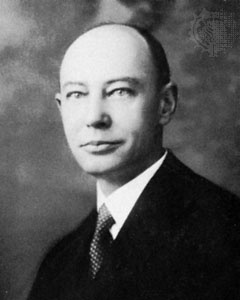Minot, George Richards
American physician
born Dec. 2, 1885, Boston, Mass., U.S.
died Feb. 25, 1950, Brookline, Mass.
 American physician who received (with George Whipple (Whipple, George H.) and William Murphy (Murphy, William P.)) the Nobel Prize for Physiology or Medicine in 1934 for the introduction of a raw-liver diet in the treatment of pernicious anemia, which was previously an invariably fatal disease.
American physician who received (with George Whipple (Whipple, George H.) and William Murphy (Murphy, William P.)) the Nobel Prize for Physiology or Medicine in 1934 for the introduction of a raw-liver diet in the treatment of pernicious anemia, which was previously an invariably fatal disease.Minot received his medical degree at Harvard University in 1912. He did research at the Massachusetts General Hospital, Boston (1915–23), the Collis P. Huntington Memorial Hospital, Harvard University (1922–28), and the Peter Bent Brigham Hospital, Boston (1923–28). He served as director of the Thorndike Memorial Laboratory, Boston City Hospital, from 1928 until his death. Diagnosed with diabetes in 1921, his ability to work was hindered until he began using insulin in 1923, which had been synthesized for the first time the year before and is considered to have saved his life.
Whipple had shown that anemia in dogs, induced by excessive bleeding, is reversed by a diet of raw liver, and in 1926 he and Murphy found that ingestion of a half pound of raw liver a day dramatically reversed pernicious anemia in human beings. With the American chemist Edwin Cohn (Cohn, Edwin Joseph), Minot succeeded in preparing effective liver extracts, which, taken orally, constituted the primary treatment for pernicious anemia until 1948, when a therapeutic factor was isolated and named vitamin B12.
- positive organ
- Positivism
- positron
- positron emission tomography
- positronium
- posse comitatus
- possession
- possum
- postal system
- post-and-lintel system
- post chaise
- Post, C W
- Post, Emily
- poster
- post horn
- Post-Impressionism
- postmaterialism
- Postojna
- Post, Pieter
- post-rock
- Postromantic music
- PostScript
- postsynaptic potential
- post-traumatic stress disorder
- Postumus, Marcus Cassianius Latinius